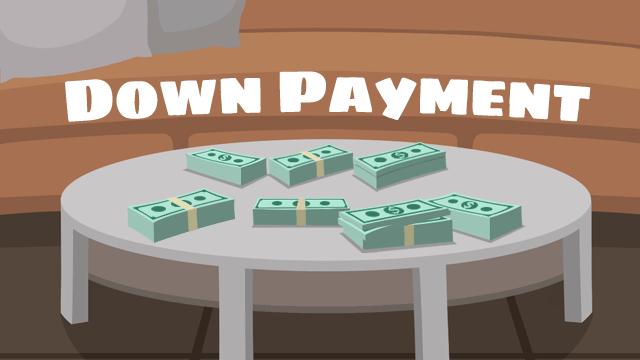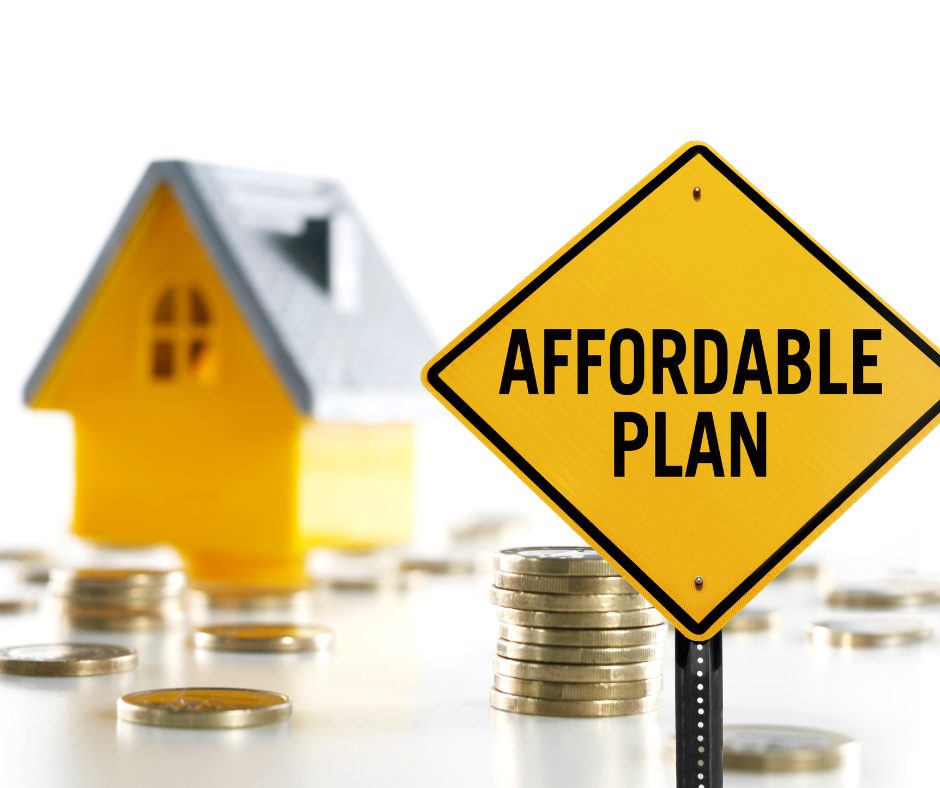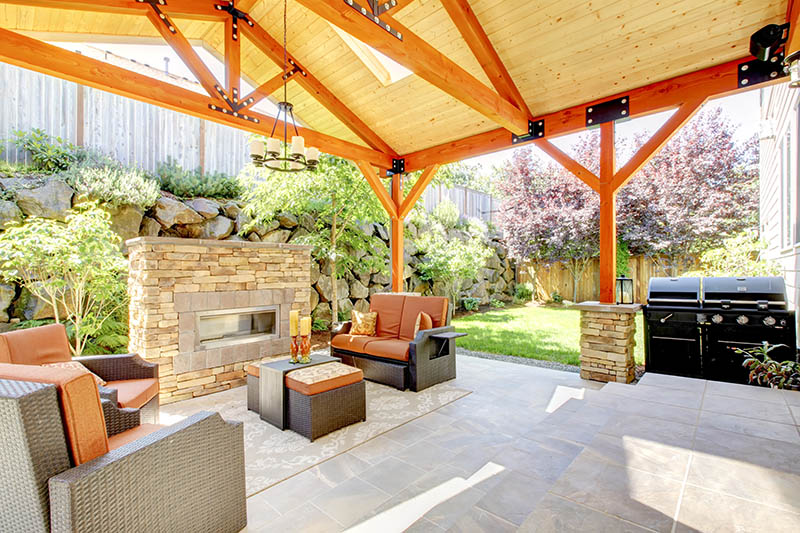How do you start buying your first Omaha NE home? The hardest part about buying…

Mortgage Down Payment – Omaha NE Home Buyer’s Guide
How does a down payment work for a house
Are you purchasing a home in Omaha Nebraska and not sure how much you should put down? There is a lot of misinformation about down payments. I will go through each one here.
I am a local mortgage lender serving Omaha, Papillion, La Vista, Bellevue, and all of eastern Nebraska. For a free consultation, please contact me.
To learn more about down payments and other loan requirements go HERE
- The 20% down myth
- Pros of 20% down
- Cons of 20% down
- Benefits of putting down as little as possible
- Where can down payment money come from
The 20% down myth
This is the mortgage myth that will not die. Every few months a potential buyer reminds me how important it is to get this information out: You do not need 20% down to buy a house. So many people are assuming they can never buy because they do not have that large down payment.
In fact only 7% of home buyers put down 20%. Very few buyers are willing or able to put down the full 20%. Yet 62% of all Americans believe they have to put down 20%.
Conventional financing has had low down payment options since the 1990s, but some myths never die. Right now conventional and FHA both offer less than 5% down options, and for many buyers this is the way to go.
Pros of putting down 20%
Now just because 20% down is not required does not mean there are not benefits to a 20% down payment. A larger down payment can mean a larger home, easier loan approval, and, most importantly, no mortgage insurance.
Qualifying for a larger home
Your max purchase price will be based on your gross income compared to all of your active debts including the new house payment. With a larger down payment, you will have a lower house payment and qualify for a larger house. Pretty straight forward. A good way to get your debt-to-income ratios in line is to put down more on the house.
Easier loan approval
Your loan approval is based on many factors. For conventional financing, your application is run through Fannie Mae or Freddie Mac’s online approval systems. If you are a good credit risk, they will give us an Approve/Eligible and we can move forward with your loan. For these automated systems there are specific rules about max debts, minimum credit score, and minimum funds needed. However, both Freddie and Fannie also look at “compensating factors”. Thing like perfect credit, low debt ratios, large reserve assets, and a larger down payment are all compensating factors and can help make your loan approval easier.
In addition to being a compensating factor, a 20% down payment allows you to avoid mortgage insurance. This has obvious financial benefits I will go over next, but there is something all buyers and most lenders do not consider. Mortgage insurance has their own loan requirements. For conventional financing, mortgage insurance companies are insuring the lender from risk of default and have their own loan review process.
An example of this happened to one of my buyers a few years ago. We had a solid deal with an underwriter approved before the mortgage insurance company did their own review right before closing. Because a train ran directly behind their house, the MI company asked the appraiser to verify the train would not lower the property value. We got it handled, but this last minute condition delayed our closing.
A 20% down payment or larger just gives you a bit of wiggle room if you are close on other parts of the loan (debt ratios, credit score, employment history, etc).
Cons of putting down 20%
Yes there are disadvantages to putting down 20%. I will cover the benefits of a low down payment in the next section, but there are few reasons you might want to put down less than 20%. Sometimes a lower down payment is better.
The rate is slightly worse
That’s right. The rate on a 20% down loan is ever so slightly worse than 15% to 5% down. The reason for this is mortgage insurance. For the most part, mortgage insurance has no benefit for the buyer. It is a cost that covers the lender from loss on a loan. It does not cover the buyer against any losses. We already went over how mortgage insurance adds an extra layer of scrutiny to underwriting.
There is one slight buyer benefit to mortgage insurance though. Because the lender is insured by the MI company on losses, they can offer better rates even with the lower down payment. However, that slight benefit only happens at the 20% down payment. Once you put down more than 20% the rate benefit goes away. The lower risk of a higher than 20% down payment offsets the MI coverage benefit.
There might be better ways to get compensating factors
So earlier I mentioned that a large down payment was a compensating factor for a loan approval. A large down payment also means a lower house payment so you can afford more house. But there may be better uses for that money.
Paying off consumer debt
If a buyer has an issue with their total debt ratio and has a lot of consumer debts (car loan, credit card, etc), it might be a larger benefit to pay off that consumer debt. Putting an extra $1000 towards your home loan will only lower the payment about $5. If you have a credit card with a high minimum payment, it is going to lower your total debt ratios more by paying off that credit card with the funds rather than put them towards the mortgage.
If the main qualifying issue is total debt ratios and not housing debt ratios, you are going to be better off paying down consumer debt (this can be done at close) rather than putting more down on the house.
Sometimes showing more reserve assets is better
If you are using all of your assets to get that 20% down, it might be a good idea to look at lower down options to show more reserves. Reserve assets are any liquid assets that are not used towards the purchase of the home. Just like a large down payment is a compensating factor, reserve assets are also used to compensate on a tight loan. In some loan scenarios, a certain amount of reserve assets are required (they are too many to list here…Just send us an email and we will answer). Fannie Mae and Freddie Mac automated loan approval systems can be fickle. If we cannot get you approved with a large down payment, we can explore the lower down/higher reserve scenario.
Just like there are tons of possible buyer situations, there are tons of different ways to structure your loan. Contacting a mortgage loan officer early will give you time to explore all scenarios.
Benefits of putting down as little as possible
A few benefits of putting down as little as possible were explored in the previous section. But there are a few reasons beyond just improving your pre-qualification. Many buyers automatically think that putting down as much as possible is always the way to go. That is not always the case.
Is there a better use for that money?
If you have high interest credit card debt using your funds to pay those off makes more sense than applying it towards a low interest mortgage. A lower down payment will increase your house payment, but we can drastically lower your overall month debt payments. This is just the most obvious use for that money.
We could also look other investment options for those funds. For example, if you have ever considered investing in real estate we could look at a minimum down payment on your home. That lower down means the additional funds could be used for investment property. We could look at rental rates and see if the cash flow from an investment property more than offsets the higher primary home payment.
Investing those funds in real estate is just one option. Before putting all of your money down on a house, talk with your financial adviser to see if there are better investment opportunities. Mortgage rates have been at historic lows for almost 20 years. You might get far more return on a mutual fund investment than you would save on mortgage interest.
Sometimes having that extra cash is a benefit
I see many buyers taking just about every penny they have to put down as much as possible on their new home. However, it is important to remember a home (even a new home) is going to have maintenance and repairs. Having money set aside for this is important.
A home is going to need furniture. That seems obvious, but many buyers do not factor in that they will be furnishing a much larger space. I’m sure we have all been to friends houses who are still using their few pieces of apartment furniture years after buying their home.
And just remember that home ownership, while overall a wonderful experience, can be stressful. A small nest egg for the unexpected will give you valuable piece of mind.
Where can down payment money come from?
Okay, now that we have gone through all the “food for thought” of a down payment, let’s get down to brass tax. Where can your down payment money come from?
Cash in the bank
This is the most obvious and by far the easiest to source. We will look at your last 30 to 60 days of bank transactions (how far Fannie and Freddie will go back depends on their automated approval). If there are no large non-payroll deposits you are good.
If there are large (more than half your monthly income) non-payroll deposits we will have to source and document them. Because Fannie, Freddie, FHA, and VA have specific eligible sources of funds, we have to know where are large recent deposits come from. I will go through those sources now.
Gift funds
Depending on the program, a family member or someone with an interest in the buyer can “gift” money to a buyer (notice they cannot loan the money to the buyer). This gift will be documented coming out of the donors account and going into the buyers account. The donor will, in most cases, have to provide 30 days of transaction for their account as well.
Investment accounts
Investment accounts are also pretty easy. We will have to paper trail the money going from your investments to your bank account. We will also request the ‘Terms and Conditions of Withdraw’ to verify you are allowed to withdraw those funds. Just an investment statement, proof of funds coming out of the account, and proof of the same amount going into your bank account will do.
Borrowing against property
A buyer can borrower funds for the cash needed at close, but this money must be backed by property. This is most typically a house, but it can also be a car, recreational vehicle, or business equipment. The buyer will have to qualify with the added debt payments. Unsecured loans cannot be used for funds to close.
Cash is not king
It is important to remember all sources of down payment funds must be documented. If we cannot document the source of funds they cannot be used towards the loan. This is a problem for buyers with cash. We cannot document where the cash came from so it cannot be used towards the loan. If you have cash it is important to talk with a loan officer early so you can get those funds in the bank and know exactly when you can buy without having to document those funds. If we have to go back 60 days on your bank statements, we want to get those funds in the bank 61 days before you start the home buying process.
What to do now
Cash to close is the part that often frustrates buyers. I constantly hear buyers say “it is my money what does it matter where I got it?”. Unfortunately all loan programs do want to know where your funds are coming from. Best to get all of this taken care of early so there is no delay or issue in your home financing.
Other useful links
- How to improve your credit
- The 20% down rule on conventional
- What is Escrow?
- How is income calculated?
- Why your assets matter
- Mortgage Calculator
- Is Credit Karma accurate?
- FHA vs Conventional, which is better?




